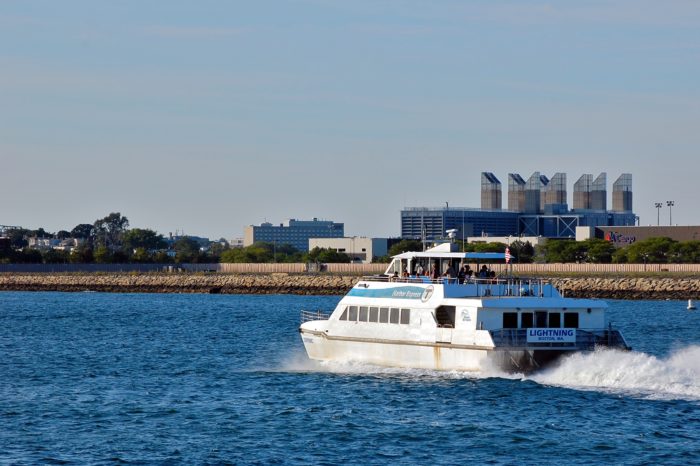Rebuilding the Long Island Bridge May Not Be the Answer
From the 1920s to 2014, Boston Harbor’s Long Island played an integral role in housing medical, rehabilitation and shelter facilities for the City of Boston. Specifically, a homeless shelter was opened on the island in 1928; an almshouse, addiction facility and a chronic disease hospital in 1941; plus several since-decommissioned World War II-era military installments.
In 1950, a major step to improve access to the island, which had only been reachable by boat or ferry, was the $2 million construction of the Long Island viaduct. The project provided access to the Island via a bridge connected to neighboring Moon Island, which was connected to North Quincy by a causeway.
However, in 2014, at the urging of MassDOT and following years of neglect, the Long Island Bridge was deemed unsafe by Boston Mayor Marty Walsh. The bridge was closed, demolished, and island facilities shuttered. Patients were forced to move elsewhere.
Roughly four years removed from the decision and fueled by a growing opioid crisis in Massachusetts, Boston is now considering rebuilding the Long Island Bridge and opening a drug treatment center on the island. According to Mayor Walsh, building a bridge from the island to the Squantum Peninsula in Quincy would cost $80 million.
But there’s a rub.
The City of Quincy is vehemently opposed to the bridge reconstruction project, citing increased traffic in the quiet neighborhood of Squantum and further congestion on city roads. Additionally, the Quincy Conservation Committee denied Boston’s permit request for the bridge proposal, an action that Boston has appealed. Quincy Mayor Thomas Koch is hoping to raise hundreds of thousands of dollars for legal fees for the case, which will likely be resolved in Superior Court.
Pioneer’s Transparency Team has recently written about the enormous backlog of funding for projects in the Commonwealth, many of them infrastructure related. Most notable is the Storrow Drive Tunnel, which has the lowest sufficiency rating of any bridge in the country. Given many competing projects, the best option for providing access to a newly reopened Long Island facility may be ferry service, not an $80 million bridge that will likely take years to construct and require ongoing maintenance.
The MBTA currently offers two year-round ferry services: one between Hingham and Boston’s Rowe’s Wharf, and another between Long Wharf North in Boston and Hull. The price for trips on each ranges from $3.50-$18.50. Below is a map of the ferry routes, courtesy of the MBTA.

As you can see, both the Hingham and Hull ferry services pass directly by Long Island and there is a clear path to the island from Boston’s Seaport, making a ferry geographically feasible. Below is a Pioneer’s projection of what a ferry route to Long Island from South Boston’s Black Falcon Pier would look like.

While it may be geographically possible, the question remains: is ferry service economically feasible?
Pioneer’s MBTA Analysis research tool shines light on that question. In fiscal year 2017, the MBTA’s operating cost for ferry boat service was $10,714,967 and fare revenue was $12,133,183, resulting in a surplus of $1,418,216 (additional data regarding the MBTA Ferry service can be found below). Despite a recent Boston Globe article noting that expenses and fares for ferries will be increasing due to a new contract with Boston Harbor Cruises, a Long Island ferry, if there were enough riders, might generate sufficient revenue to cover costs. Such an option would be more efficient on many levels rather than building a new bridge.

Although ferry service to Long Island may not be as convenient as a bridge for some, it may be the most pragmatic and reasonable transportation solution for a re-opened Long Island. Boston could offer fare subsidies to clients of the drug treatment center with limited economic means. On the issue of security, which is very important at drug treatment facilities, in the absence of a bridge, Long Island can be aided by extensive State and Boston Police presence in the harbor. A similar presence is provided for LNG tankers entering the harbor. In addition to being favored by and fairer to Quincy residents, specifically in the Squantum neighborhood, ferry service would save the City of Boston millions in construction costs. Before undertaking new project the Commonwealth must address its backlog of funding issues.
Pioneer recommends that a study be conducted by the MBTA to determine the cost of implementing ferry service to Long Island based on estimated usage for a 24-hour operation. If ferry service is deemed cost effective and feasible, it may prove to be a better vehicle for providing access to Long Island than a reconstructed bridge.
Jay Anderson is a Northeastern University Co-Op at the Pioneer Institute; he is a Political Science major.



